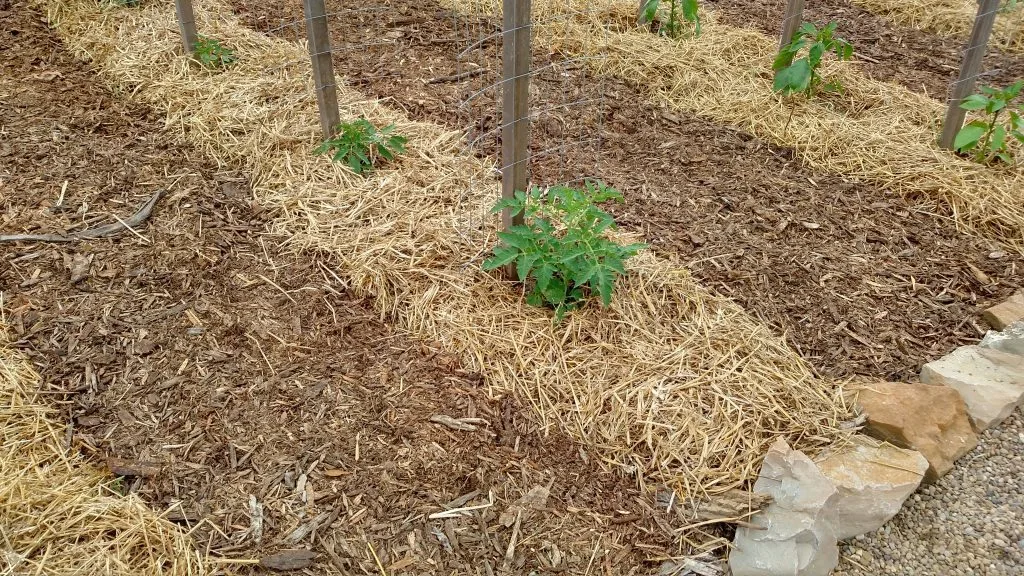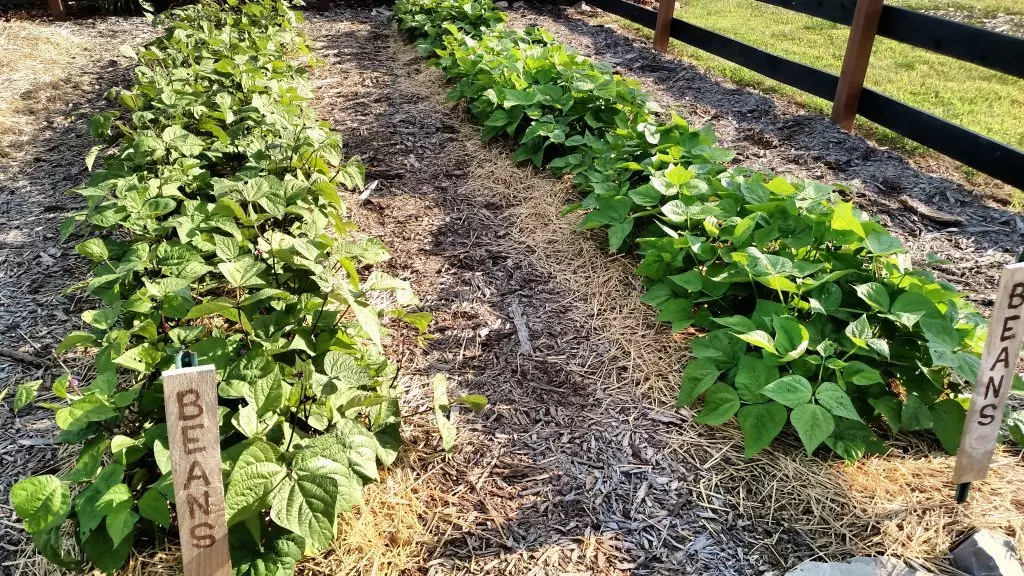As many of you that follow us regularly know, we like to try out a few new things in our garden each growing season. It’s always fun to see what might work and what won’t. Although some fail miserably, others have led to some huge time-saving gardening methods – like the potato crates and stake a cage for trellising our tomatoes and peppers.
Well, as we head into the first week of July, there is one experiment in our raised row garden that has clearly already become the most successful of all-time. Although we normally wait until the end of each growing season to share the results of our little trials, we were simply too excited to hold on to this one!
Our organic raised row garden beds are the stars of the show when it comes to growing most of our own food. Not only are they easy to create and maintain, they require little weeding, and concentrate all of our gardening labor to the 18″ wide growing space in each row. We cover all of our growing rows during the season with mulch to keep out weeds, and then plant an all-important cover crop of annual rye, buckwheat or hairy vetch each fall to recharge the soil. (See Raised Row Gardening)
Cover crops are quite honestly the key to successful gardening. Not only do they add a tremendous amount of organic matter and nutrients back to the garden, they also protect the soil from losing valuable nutrients from the snow, ice, wind and rain through the harsh winter months. Most importantly – they protect your garden from weed seeds blowing in and taking over. (see: cover crops)
But if there has been one small drawback, it has been the turning over of that all important cover crop each spring. It can be difficult for some to flip it over, and a little labor intensive.
So this year, as an experiment, we did something different. Instead of turning over our annual rye cover crop this spring by hand with a shovel – we left it in place. We mowed it off a few times in the early spring with a push mower, and left the cuttings in the row. After about three mowings, the entire crop simply died off, and we went to work plating the garden.

For our tomatoes, peppers, zucchini, cucumbers, cabbage and broccoli, we used our post hole digger and created a hole right through the soil and planted. and for some of our seed crops like popcorn and beans, we left the entire row in place and used a small cultivator to create a 3″ wide planting row for the seeds. And WOW – have the results been incredible!
In a nutshell, here are the benefits: We spent a grand total of about 5 minutes with a push mower in our garden to mow off the cover crop. We spent zero time preparing our tomato and pepper beds, and about 5 minutes per row preparing the seed beds for planting. Our plants are thriving better than ever, and have required less water and maintenance than in any past year.
But as crazy as it sounds – that is not the best part! When it comes to weeds in our garden this year – they have been at an all-time low, in fact, it has been nearly weed free. By leaving the soil alone, and placing a thin layer of straw on top for mulch – they have no way to become established. In addition, the dead tops of the cover crop keep the dirt covered, keeping soil spores and soil-borne disease in check.
And one last piece of great news on the trial – when I pulled back a little straw this week to check the soil below – the cover crop has completely disintegrated. That means in a few months as fall approaches, the soil can be easily raked and planted with a new cover crop again in minutes, creating a true no-till, no dig garden! What could be better than that?!
Here’s to working smarter and not harder.
Happy Gardening! Jim and Mary
To receive our Recipes, DIY and Gardening articles each week, sign up to follow the blog via email in the right hand column above, “Like” us on Facebook, or follow us on Twitter. You can also check out our new book, Growing Simple, now available on Amazon.com.


